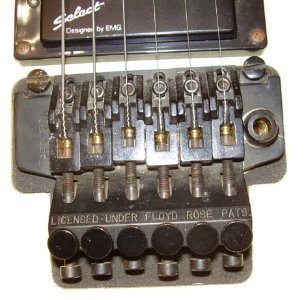Zerberus
Baron Von Shred
Re: Proper way to install round core strings with a Floyd Rose bridge?
For >25 years now, I've always snipped the ball end off, UNWOUND the string about 1/4", and clamped the EXPOSED CORE in the saddle.
This has the benefit of completely eliminating tuning issues or spontaneous unraveling by making it imposible for the core to "slip out" of an improperly locked wind.
It also creates additional pressure on the first wind, making unraveling even more unlikely.
I have never had this result in a "dead" string. Ever.
And I use DR Tite-Fits 12-52... round steel core, nickel plated wind. The insert in the packaging also suggests bending, then cutting, and I`ve never paid heed on my own instruments. I do do it on customer`s instzruments, though, better safe than sorry and some ******nozzle is always looking for something to gripe about, so why give them ammo?
For >25 years now, I've always snipped the ball end off, UNWOUND the string about 1/4", and clamped the EXPOSED CORE in the saddle.
This has the benefit of completely eliminating tuning issues or spontaneous unraveling by making it imposible for the core to "slip out" of an improperly locked wind.
It also creates additional pressure on the first wind, making unraveling even more unlikely.
I have never had this result in a "dead" string. Ever.
And I use DR Tite-Fits 12-52... round steel core, nickel plated wind. The insert in the packaging also suggests bending, then cutting, and I`ve never paid heed on my own instruments. I do do it on customer`s instzruments, though, better safe than sorry and some ******nozzle is always looking for something to gripe about, so why give them ammo?

